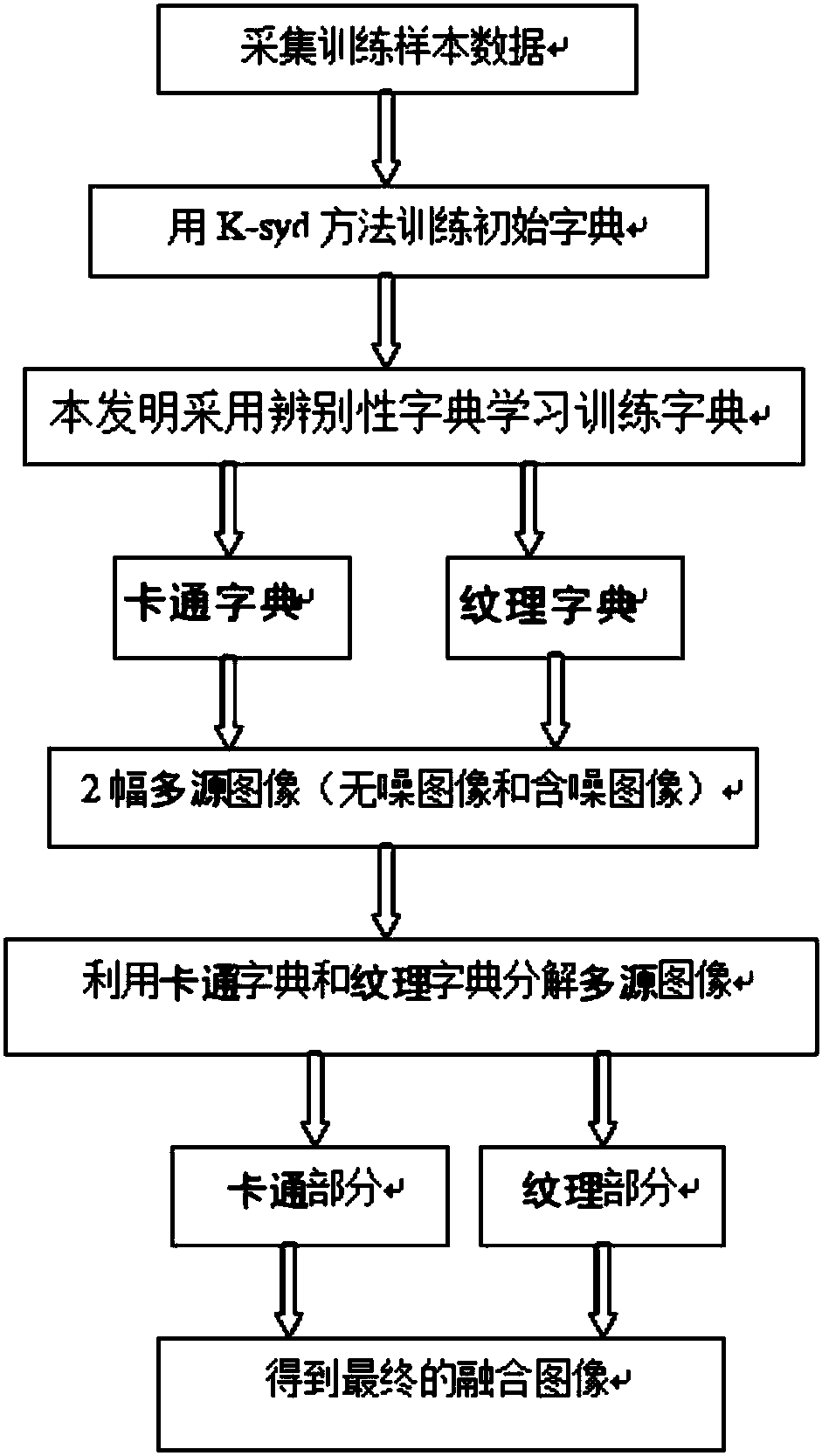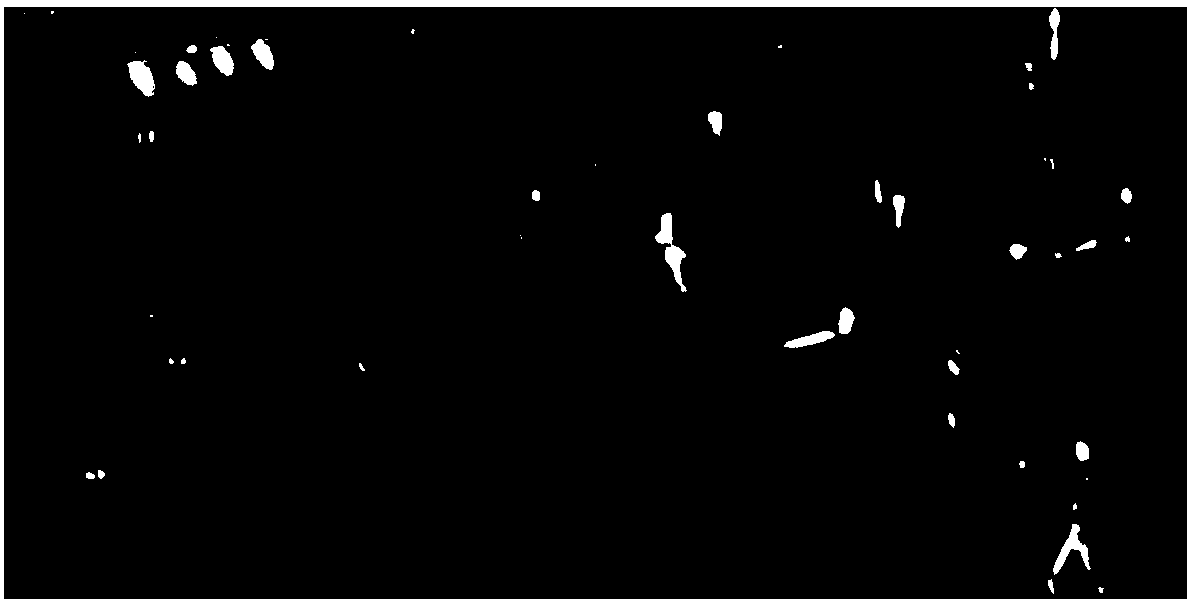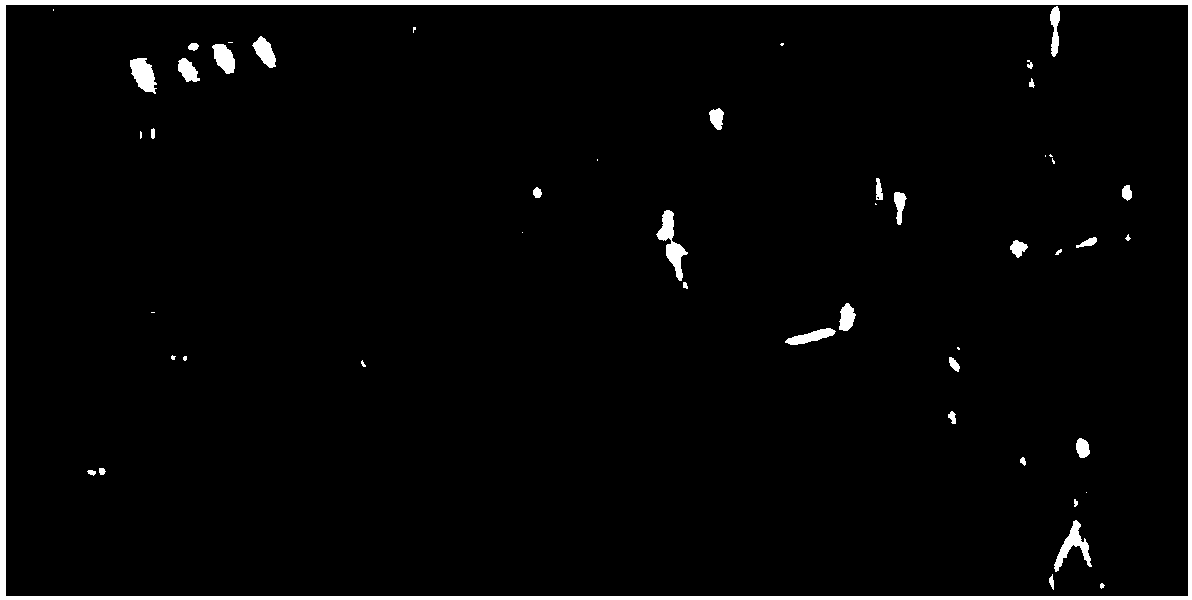Discriminative dictionary learning based multi-source image fusion denoising method
A dictionary learning and source image technology, applied in the field of multi-source image fusion and denoising, can solve the problems of multi-source image denoising and fusion difficulties
- Summary
- Abstract
- Description
- Claims
- Application Information
AI Technical Summary
Problems solved by technology
Method used
Image
Examples
Embodiment 1
[0077] Embodiment 1: as figure 1As shown, the present invention proposes a method for fusion and denoising of multi-source images based on discriminative dictionary learning. Firstly, multi-source images are collected as training samples, and the initial cartoon dictionary and initial texture dictionary are first learned from the training samples through the K-SVD algorithm. In order to improve the discriminative and expressive ability of the dictionary, a new dictionary learning model is proposed by introducing weighted kernel norm constraints. According to the proposed dictionary learning method, the initial dictionary and training samples are used to learn the cartoon dictionary and the texture dictionary; then use MCA The algorithm decomposes the multi-source image to be fused to obtain cartoon components and texture components. At this time, the different components obtained by decomposition are relatively incomplete. By introducing weighted Schatten sparse kernel norm con...
Embodiment 2
[0137] Embodiment 2: adopt traditional ASR, KIM, NSCT, NSCT-SR and Zhu-KSVD method to carry out fusion denoising to the image after adding the noise of embodiment 1, and use Q MI , Q G和 Q P The denoising result is evaluated, and compared with the method of the present invention, Table 1 is the denoising index comparison table of the traditional method and the method of the present invention,
[0138] Table 1 Traditional method and the comparison table of the denoising index of the method of the present invention
[0139]
[0140] The evaluation of image fusion denoising effect includes comprehensive evaluation of subjective visual effect and objective parameter indicators. The subjective effect is observed by human eyes, and the image fusion results are evaluated by three experts in image processing disciplines; the objective evaluation uses mutual information Q MI , Gradient-based evaluation index Q G and the phase-coherence-based index Q P These three parameters are ...
PUM
 Login to View More
Login to View More Abstract
Description
Claims
Application Information
 Login to View More
Login to View More - R&D Engineer
- R&D Manager
- IP Professional
- Industry Leading Data Capabilities
- Powerful AI technology
- Patent DNA Extraction
Browse by: Latest US Patents, China's latest patents, Technical Efficacy Thesaurus, Application Domain, Technology Topic, Popular Technical Reports.
© 2024 PatSnap. All rights reserved.Legal|Privacy policy|Modern Slavery Act Transparency Statement|Sitemap|About US| Contact US: help@patsnap.com










